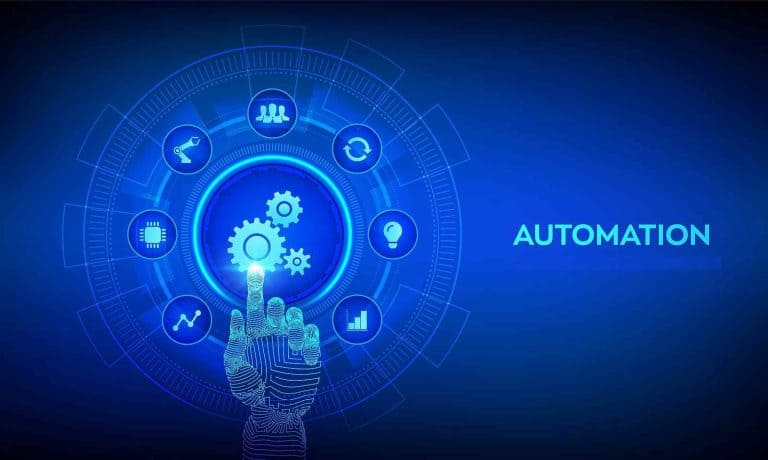We know that automation can make a huge difference in our work and our organizations’ operations. One area where automation is making waves is customer service, and a key technology in this area of innovation is the use of APIs and webhooks.
Table of Contents
ToggleIn this article, we’ll explore webhook benefits for customer service, using real-world examples and delving into how webhook platforms can be leveraged when developing new projects.
Don’t worry if you’re not a developer. We’ve focused on the business benefits of these tools and will start the article with a short technical explanation of the tech.
APIs and Webhooks: A Brief Overview
At a high level, APIs (Application Programming Interfaces) are sets of rules that allow different software applications to communicate with each other. Webhooks, on the other hand, are automated messages sent from one application to another when a specific event occurs. They can be considered user-defined HTTP callbacks that enable real-time data delivery between applications.
Combining APIs and webhooks enables automation, which is especially relevant to customer service departments that manage a large volume of daily requests. Automation can help improve response times, reduce errors, and streamline processes.
1. Streamlining Customer Support Tickets
One of the most common webhook benefits for customer service is streamlining the handling of customer support tickets. By using webhook platforms like Hookdeck, customer service teams can automatically create, update, and close tickets in their support systems when specific events occur in other applications.
For example, when a customer sends an email to the support team, a webhook can automatically create a ticket in the support system while simultaneously keeping track of the event in a management database.
As the support team responds and updates the ticket, additional webhooks can be triggered to send updates to the customer, ensuring they are kept informed throughout the process.
Step-by-Step:
- Integrate your support system with a webhook management platform.
- Set up webhooks to create, update, and close tickets based on specific events.
- Monitor and manage webhook connections from a single place, creating rules and defining behaviors for connections.
2. Proactive Customer Engagement
Another webhook benefit for customer service is proactive customer engagement. Webhooks can be used to monitor customer behavior in real time and trigger automated actions when specific events occur, such as sending targeted messages or offering personalized assistance.
For example, if a customer spends a significant amount of time on a product page, a webhook can trigger a live chat popup to offer assistance. This proactive approach to customer service will improve the overall customer experience, especially for new users still familiarizing themselves with your product.
Step-by-Step:
- Set up webhook events to monitor customer behavior on your website or app.
- Create rules and actions for specific events, such as sending targeted messages or offering live chat assistance.
- Manage webhook connections and monitor their performance.
3. Automating Customer Feedback Collection
Wouldn’t you say collecting customer feedback is essential for improving your products? Most managers would agree, but the process can be time-consuming and prone to errors if done manually. Webhooks can be used to automate the process of collecting customer feedback, ensuring data accuracy and saving time for customer service teams.
When a customer completes a purchase or interacts with customer service, a webhook can automatically trigger a feedback survey to be sent via email or SMS. The responses can then be automatically processed and analyzed, helping teams to identify trends and areas for improvement.
Step-by-Step:
- Set up events to trigger feedback surveys after specific customer interactions.
- Integrate your feedback collection platform with your DB using an API
- Analyze feedback data and identify trends to improve your products and services.
4. Automating Issue Resolution
By using webhooks, customer service teams can automate the resolution of common issues, freeing up time to focus on more complex problems. If a customer reports a problem with their account, a webhook can automatically trigger a password reset email or send a link to a help article.
Automating issue resolution not only saves time for customer service teams but also helps to improve customer satisfaction by providing faster and more accurate solutions to common problems.
Step-by-Step:
- Identify common issues that can be resolved through automation.
- Set up events to trigger appropriate actions based on specific customer requests or problems.
5. Real-time Reporting and Monitoring
Webhooks can be used to automate the generation and delivery of real-time reports and monitoring data, providing customer service teams with up-to-date information to make informed decisions. Webhooks can be used to track customer service metrics, such as response times, resolution rates, and customer satisfaction scores.
By automating the reporting process, customer service teams can quickly identify areas for improvement, monitor the impact of changes, and track the overall performance of their customer service operations.
Step-by-Step:
- Set up events to collect real-time data on customer service metrics.
- Create rules and actions to generate and deliver reports based on the collected data.
- Create dashboards to report live data to relevant parties managing the process.
Selling the Initiative to Management
Before you can harness the power of automation to revolutionize your customer service operations, you’ll need the support and buy-in from management. Here are a few tips on how to present a compelling case for implementing webhooks and automation in your customer service department.
Identify the pain points: Start by highlighting the current challenges faced by your customer service team, such as long response times, repetitive tasks, and high operational costs.
Be specific about how automation and webhooks can address these pain points and lead to a more efficient and effective customer service process.
Quantify the benefits: Present management with clear, measurable benefits of using webhooks and automation in your customer service operations.
These can include reduced response times, increased customer satisfaction, and decreased operational costs. Provide concrete examples and case studies from similar businesses to illustrate the potential impact of these improvements.
Outline the costs: Be transparent about the costs associated with implementing webhooks and automation. Include estimates for software, infrastructure, and any necessary training for your customer service team. Make sure to emphasize the potential return on investment (ROI) and long-term cost savings that can be achieved through improved efficiency and reduced manual labor.
Highlight competitive advantages: Emphasizing how adopting automation can provide your company with a competitive edge will certainly speak to management. Showcase how implementing these technologies has helped other businesses stay ahead of the trends.
Address potential concerns: Be prepared to address any concerns or questions that management may have. This could include security, privacy, or integration with existing systems.
By presenting a well-structured and persuasive case, you can effectively sell the initiative to management and pave the way for implementing webhooks and automation in your customer service operations.
With the right support and resources, your team will be well-equipped to deliver exceptional customer experiences and drive long-term success for your business.
Webhooks and APIs for Better Customer Service
Automation is revolutionizing customer service by streamlining processes, reducing errors, and improving the overall customer experience. Leveraging webhooks and APIs benefit customer service departments significantly. I hope this article has demonstrated that your organization can stay ahead of the curve and provide outstanding support to its customers.
Whether you’re a software developer or a customer service professional, understanding the potential of APIS and webhooks in customer service can open up new possibilities for improving your operations.
Embrace the power of automation to revolutionize your customer service operations and elevate the experiences you provide to your customers.
FAQ
A: Automation in customer service refers to using technology and tools to streamline and enhance customer support processes, such as automated responses, chatbots, and self-service options.
A: Webhooks are automated notifications sent from one application to another when a specific event occurs. In customer service, webhooks enable real-time data exchange, faster response times, and seamless integration between different systems for a more efficient and personalized customer experience.
A: Automation revolutionizes customer service by automating repetitive tasks, providing instant responses to customer inquiries, enabling proactive notifications, and allowing businesses to scale their support efforts without sacrificing quality.
A: Examples include automated email responses, chatbots that provide instant answers, notifications for order updates, real-time issue tracking, and automated follow-ups to ensure customer satisfaction.
A: While automation streamlines processes, it is essential to strike a balance to maintain the human touch in customer service. Human agents are crucial for complex issues, empathetic interactions, and building relationships. Automation should support and enhance human efforts rather than replace them.




